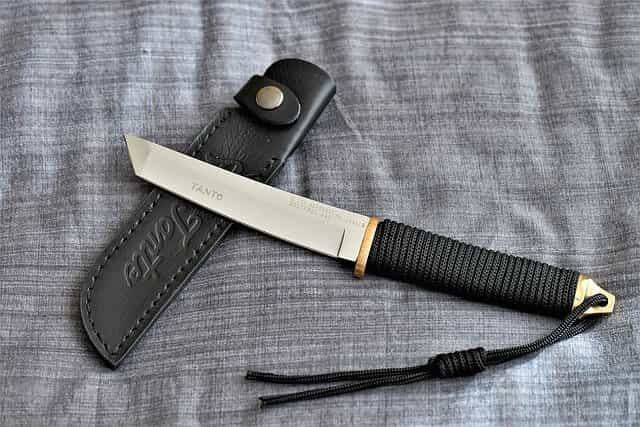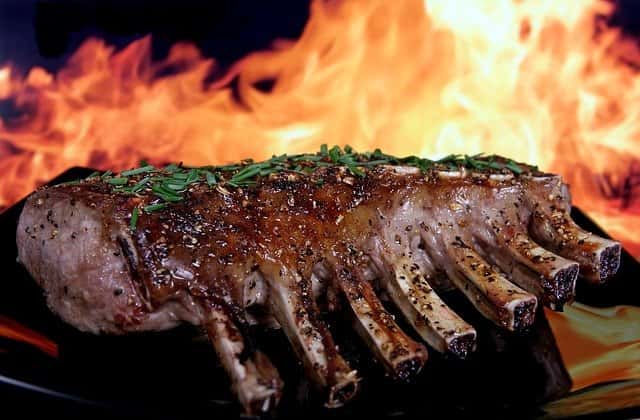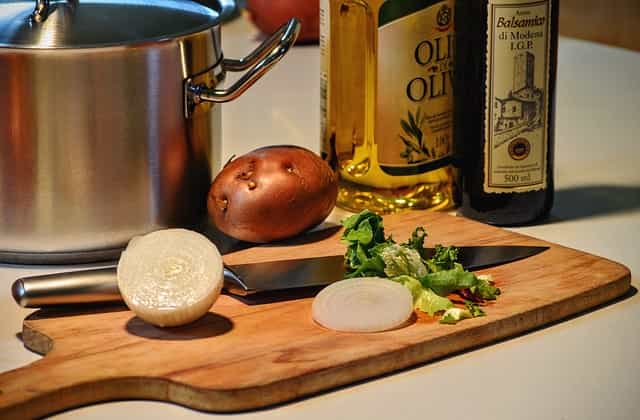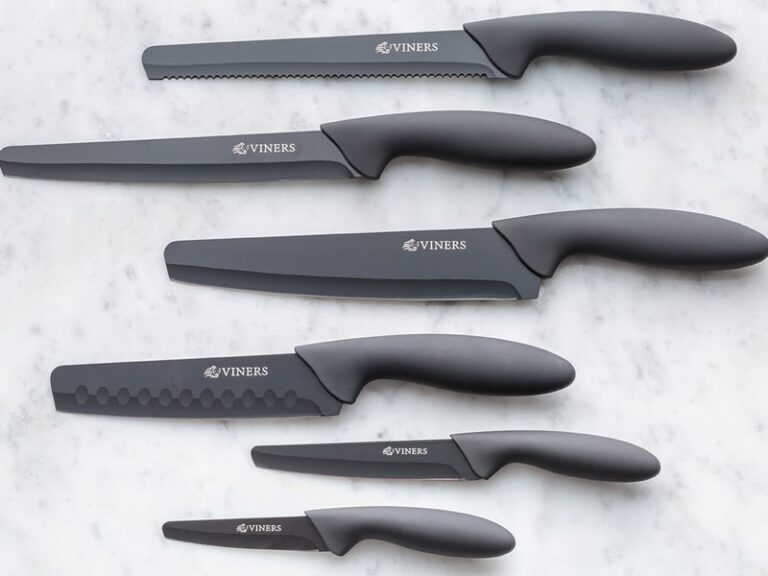Things are surely taking a bit of an interesting turn today.
For a guy who did a complete guide on how to sharpen your knife with a whetstone and even threw in some unconventional tips to sharpen your knife without a sharpening tool, this one sounds strange.
Well, maybe not to you since you are here already. If you are looking for how to dull a knife, you must have some pretty good reasons (which I’ll get into soon enough) for that.
So, without further ado, let’s make that knife badly need another trip to the sharpening block.
Table of Contents
Why would you need to dull a knife?
Your knife is best used when sharp. I also mentioned in my big list of knife safety tips that a sharp knife is safer to use than a dull knife.
Yet, here we are, looking to take that edge sharpness off.
Before we discuss the various ways to dull a knife blade (of which I have six methods for you), here are some reasons why you might need to do that in the first place.
For Props
You might need to use knives in a play, setting, or presentation but want to make sure that there are no chances of anyone ever getting hurt.
This is just you being responsible and for that, dulling your sharp knife is acceptable.
I would normally recommend buying a prop knife like this one instead, though. That way, you don’t have to stress the knife material so much, especially if you would still sharpen it for later use.
But then, again, the choice is all yours here. And still, you’re making a wise consideration by choosing to dull the blade.
Doing Tricks
When I wrote about the many cool beginner tricks that you could do with a butterfly knife, I added a condition:
That you only use butterfly knife trainers for now.
Besides the fact that the butterfly knife is illegal in a lot of regions, there is also a high chance that you will cut yourself from using it. The knife can still cut you (from the bite handle) when closed, telling you how much of an injury risk it can be.
If you’re not able to get a butterfly trainer – or any knife trainer for that matter – it would make sense to dull a knife and use that. But only if you can dull it properly. With the methods I discuss below, that shouldn’t be a problem.
Fear of Sharp Knives
I know this one sounds funny, but I’m including it because it has happened to me before.
I have been nicked slightly by a sharp knife before and that was my fault. Instead of cutting a piece of onion on a cutting board, I wanted to see if I could pull it off in my palm. Stupid, I know.
Still, some of us are not comfortable with overtly sharp knives. They make our lives easier and tasks faster, but there’s an unease that could come with them.
Personally, I would just keep employing the best knife safety tips and steer clear of any problems. For you, though, dulling the knife might be the only option.
So, again, here we are 😉
Learning the Poor Practices
Finally, you might only want to learn how to dull a knife so you can avoid intentionally or mistakenly making any of such mistakes.
I have created this guide with you in mind also. By the end, you would have found actionable pieces of advice on what not to do if you’d like to keep the sharp edge of the blade for longer.
Now, how do you dull Your knife?
Enough chitchat already. Let’s cut to the chase – all pun intended.
Method #1 – Use the Knife

I was going to keep this one for last, but let’s start with it, by all means.
It is not uncommon knowledge that using your knife for a while will get it dull. The rate at which the knife dulls will be dependent on factors such as the blade material and the overall quality of the knife. But it will get dull at some point.
The only downside to this method is that it might not happen quickly enough. If you are here wondering how to dull a knife, you’re looking for something to get this done faster.
So, the other methods on this list should do wonders for you then.
Method #2 – Get the Sharpening Stone
You and I both know that the sharpening stone is there to improve the sharpness of your knife. It even has the word ‘sharpening’ in it.
There’s a catch, though:
When I discussed sharpening your knife on a whetstone, I was particular about choosing the right angle. Should you take your knife to the sharpening stone at the wrong angle, you stand the chance of dulling it.
Now, you could be tempted to run the edges of the knife directly on the sharpening stone. This will cause damage (micro-chipping) to the knife’s edge and also cause some parts of the stone to chip. So, don’t do that.
Simply use a higher angle than normal when sharpening this time and round the edges of the knife, instead of keeping it flat against the stone.
Method #3 – Lose your Cutting Board

Cutting boards are not just there for the aesthetics. They help ensure the knife doesn’t come in contact with hard, unsafe surfaces (such as your kitchen counter) which could rob them of their sharpness.
Once you stop using your cutting board and start cutting on the counter or other places, the edge starts pushing out of alignment and the friction makes it lose sharpness.
Side Note: This 4-set organic bamboo cutting board is probably the best thing you’ll put your money on today. Designated for different food items and highly eco-friendly too, they’ll keep your knives safer and sharper for longer.
Method #4 – Get a Sandpaper
Sandpaper brings friction to the table. Friction wears out metal and can do the same to your knife’s edges. On wearing, the edges stop being sharp – depending on the degree to which you sand them.
Bigger/ sharper knives might need the help of mounted/ industrial sanding machines to make dull. If you’re working with conventional kitchen knives and/ folding knives, though, the manual sanding technique should work wonders for you.
Regular sandpaper will not work here as it might tear easily or wear faster. Get industrial-grade sandpaper with high grit levels to effectively dull out the knife faster.
Method #5 – Get to Concrete
In the world of alternative techniques to sharpen your knives, I talked about how stone could work wonders too.
Here, concrete will also get the job done like the sharpening stone suggested above.
Follow the same procedure, angling the knife higher than you normally would when sharpening. Drag it back and forth through the concrete, alternating the sides as you go.
It won’t happen in minutes but you’ll get your dull knife if you keep at it.
Method #6 – Cut Hard Materials
Your knife might be a cutting tool, but some things will be hard to cut through. Take the knife through these hard materials enough and it loses the ability to make any fine cuts.
Some of such items to cut includes:
- Wood
- Rope
- Plastic
- Clothing materials (especially tough ones)
- Sacks, etc.
Continuous use of the knife on such materials weakens the edge, so much that it becomes dull.
How to know if the knife is dull enough?
Simple.
Try out one of the many knife sharpness tests I have discussed here and see how the knife fares.
Note that dulling any sharp knife doesn’t happen in minutes. Depending on how sharp the knife was when you started, and the techniques you are using, dulling the knife could take anywhere from a few hours to a few days – or even weeks.
Again, if you need a dull knife that badly, getting a prop knife won’t be such a bad idea. You can pick these prop knives on Amazon – and they cost almost nothing.
Sharpening the dull knife
Now that you have dulled your knife and it has achieved its purpose, do you want to get it back to its full potential? Then try this:
Final Thoughts
For whatever reasons it was that you were seeking how to dull your knife, I believe the information above must have satisfied that intent.
All that’s left is for you to identify which one of these methods best agrees with you, and go for it.
No matter which approaches you take, don’t forget to stay safe while at it.







